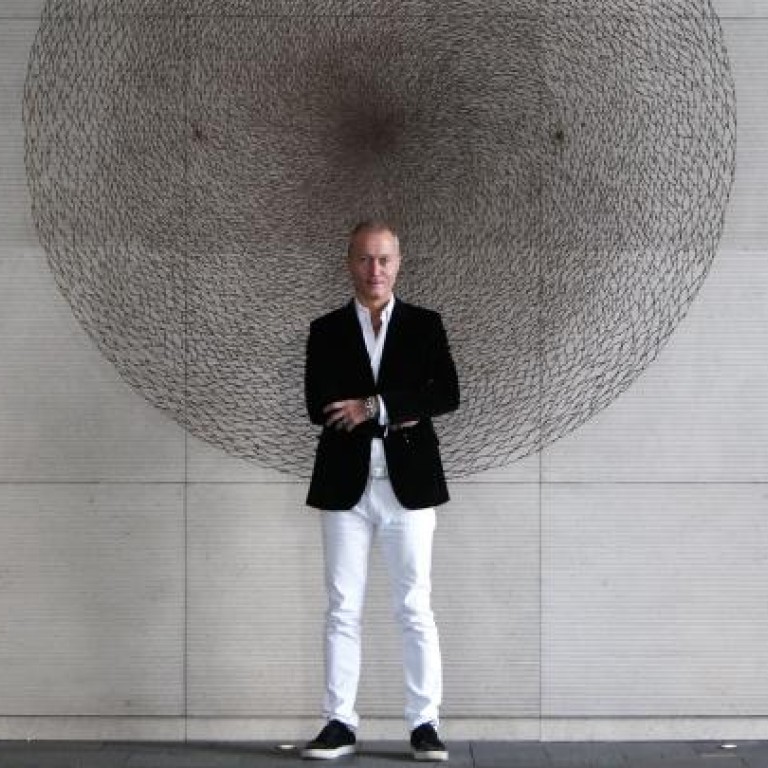
Bali is my muse says jewellery designer Guy Bedarida
Bali is a fertile source of inspiration for jewellery designer Guy Bedarida
Guy Bedarida's business card says a lot about him. It also speaks volumes about the direction of John Hardy, the jewellery brand for which he is creative director and head designer. The list of mobile numbers for Paris, New York, Hong Kong, London, Bangkok and Bali not only reflects the brand's expanding reach, but also perhaps indicates that he can blend into a sophisticated crowd in the French capital as easily as the art-infested Ubud.
Bedarida is in Hong Kong for the city's jewellery fair and staying at the Upper House in Admiralty, where the hotel's serene, simple Asian-influenced design appeals to his aesthetic.
Unsurprisingly, the half-Italian, half-French designer is decked out with chunky pieces from John Hardy. "This dragon bracelet is my favourite. It's related to a Balinese legend that represents eternal love, prosperity and protection. These bracelets here are a typical John Hardy hand-woven design, but this one does not exist in the collection. It's made with natural purple diamonds from a new mine in Russia ... I'm testing them for a collection. The colour is very subtle - I love it."
Talking about jewellery ignites a passion in Bedarida.
"I have always loved jewellery. My mother's from Florence and my father from Paris so I was exposed to many beautiful things growing up. Jewellery has always fascinated me, even in the religious sense," he says.
"I was raised Catholic and loved all the beautiful churches covered in semi-precious stones and the cloth and jewels of the priests and bishops.
"Fashion, interior design and photography tempted me but jewellery design won. I love how jewellery goes through time - heirlooms that people keep forever, pieces that a woman wears for a long time. That is not the case with the trend-driven fashion industry where clothes are discarded after a year."
Before joining John Hardy in 1999, Bedarida worked for the high-end French jeweller Boucheron where he designed precious objets d'art and pieces for royalty and collectors. At Van Cleef & Arpels he made custom pieces for celebrities. "At the French houses I worked with a lot of gold and semi-precious stones, but at John Hardy I discovered the beauty of silver. There is something very noble about silver - something very masculine and feminine at the same time. And the colour is very soft - it has a soul."
Bedarida spends most of his time at the John Hardy design centre in Ubud, the lush and creative heart of Bali. There he leads a team of skilled illustrators, designers and wax carvers who all work by hand to create mostly Asian-inspired pieces for a brand that is marketed as "sustainable luxury". Following traditional techniques is part of the formula Canadian-born founder and jeweller John Hardy pursued when he moved to the Indonesian island in the 1970s. The philosophy has been well received with the collections now available worldwide from Harrods in London to the Four Seasons in Paris and Lane Crawford in Beijing. There are two stores in Hong Kong.
"I've been in charge of the collections for the past 14 years and feel blessed to be based in Bali. Our workshops in Ubud are truly beautiful and we follow traditional techniques - we could make the pieces by machine but it would be a kind of death."
The label's studio is an impressive bamboo structure designed by Malaysian architect Cheong Yew Kuan, located in an open space among rice fields and the jungle, Bedarida tells us.
"We have low-impact buildings and an organic farm. Every day there is a new discovery - a new leaf or a new flower ... It's an amazing source of inspiration."
Another inspiration is travel. "India, China, and Africa have all influenced my work. For the latest collection [spring-summer 2013] I was inspired by Borneo. It's such an interesting mix of cultures, from the Dayaks to the Chinese and the Dutch."
As Bedarida gazes across the city's skyline he speaks of a "vibrant Hong Kong" with "fashion-forward people". But one gets the overwhelming feeling that this creative force prefers real jungles to the concrete variety.

